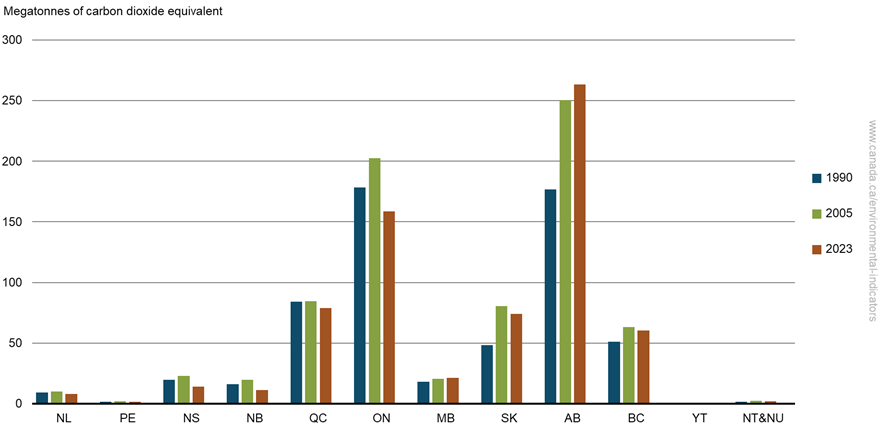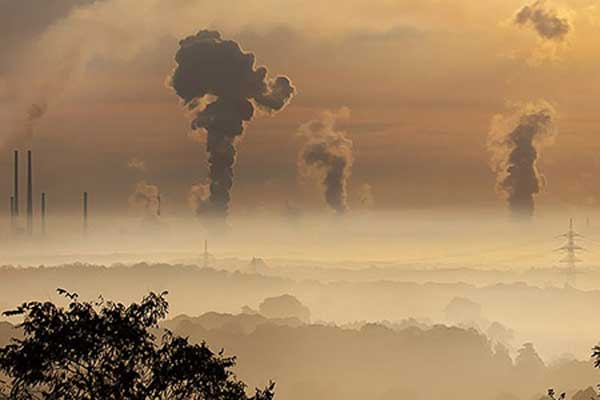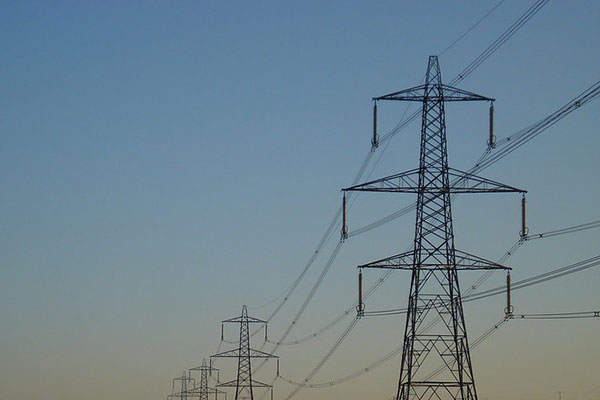- Canada's greenhouse gas emissions fell by 8.5% from 2005 to 2023, reaching their lowest level in nearly three decades (excluding the pandemic year).
- Emissions from the electricity sector decreased significantly due to coal phase-out, but oil sands emissions soared by 480% since 1990.
- Alberta remains the highest-emitting province, while Ontario and Quebec have made notable progress in reducing emissions.
In the quiet suburbs of Edmonton, Lisa Andrews watches her children play in the backyard, knowing the air they breathe is cleaner than it was a decade ago.
That’s because Canada’s latest greenhouse gas inventory shows that emissions in 2023 were 8.5% lower than in 2005, the lowest level in nearly three decades (excluding the pandemic year). But despite this progress, the data indicates that Canada still has a long way to go to meet its climate targets.
Emissions are falling, but is it enough?
The most recent data from Environment and Climate Change Canada indicates a total of 694 megatonnes of carbon dioxide equivalent (Mt CO2 eq) emissions in 2023, down from 700 Mt in 2022. While this decrease marks progress, it falls short of the country’s ambitious targets: a 40-45% reduction below 2005 levels by 2030.
Canada’s emissions remain 14.4% higher than in 1990.
The decrease is largely attributable to significant reductions in the electricity sector, driven by the phasing out of coal power.
Coal, which used to account for 85% of combustion emissions in 1990, fell to 44% by 2023. In contrast, natural gas, which is less GHG-intensive than coal, has increased its share from 3% to 49% over the same period. This shift has contributed to a 58% decrease in GHG emissions from the electricity sector since 2005.
The oil sands challenge
Despite overall reductions, emissions from Canada’s oil sands continue to rise, driven by increased production from more GHG-intensive sources. Oil sands emissions increased by 480% from 1990 to 2023, with more than half of this growth coming from in-situ production. The oil and gas sector remains the largest emitter, responsible for 30% of Canada’s total emissions in 2023.
Between 2005 and 2023, emissions from the oil and gas industry increased by 7%, despite a decline in emissions from natural gas and conventional oil production by 30% and 21%, respectively. This persistent growth highlights the challenges of reducing emissions in one of the country’s most GHG-intensive industries.
Regional and economic disparities

Greenhouse gas emissions by province and territory, Canada, 1990, 2005 and 2023. (Environment and Climate Change Canada (ECCC))
Emissions also vary significantly by province. Alberta remains the top emitter with 263.4 Mt CO2 eq in 2023, an increase of 49% since 1990.
In contrast, Ontario and Quebec have seen reductions since 2005, primarily due to phasing out coal-fired power plants and reducing industrial emissions. Ontario’s emissions, for example, decreased by 22% from 2005 levels.
Interestingly, while emissions per capita decreased by 21% from 1990 to 2023, the relationship between economic growth and emissions has also changed.
In 1990, Canada emitted 0.52 megatonnes of CO2 per billion dollars of GDP. By 2023, that figure had nearly halved to 0.29. This indicates that Canada’s economy is becoming less carbon-intensive, but the total volume of emissions remains a critical issue.
What does this mean for Canadians?
For residents like Lisa Andrews, the air feels cleaner, but the reductions are uneven and not guaranteed to continue without consistent policy enforcement. As the government aims for a 45-50% reduction below 2005 levels by 2035, sectors like transportation and agriculture still pose challenges, with emissions from light trucks and crop production on the rise.
While lower emissions per capita suggest some progress, the total volume of greenhouse gases remains substantial. To achieve its 2030 and 2035 goals, Canada will need to continue addressing emissions from high-impact sectors, including oil and gas and transportation.
Moving forward
While Canada has made tangible progress, balancing economic growth with environmental responsibility remains a daunting task. Policymakers are urged to not only maintain but accelerate efforts to reduce emissions across all sectors, particularly in oil and gas, to meet the targets set for 2030 and beyond.











Comments